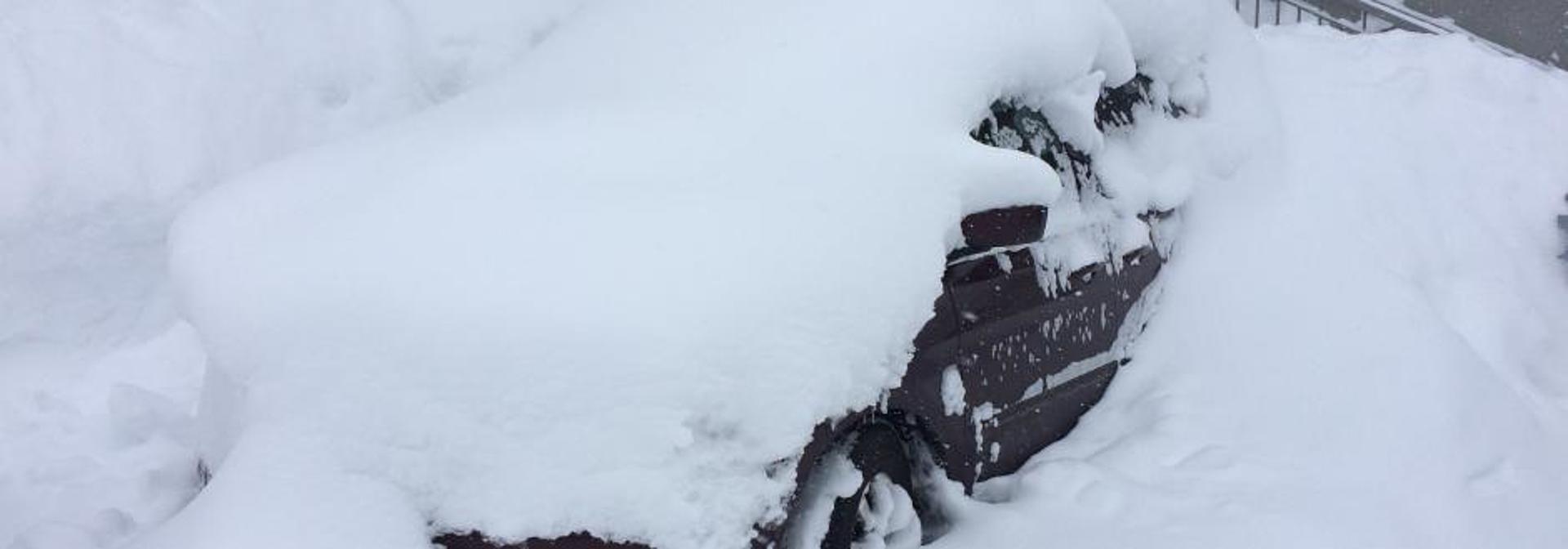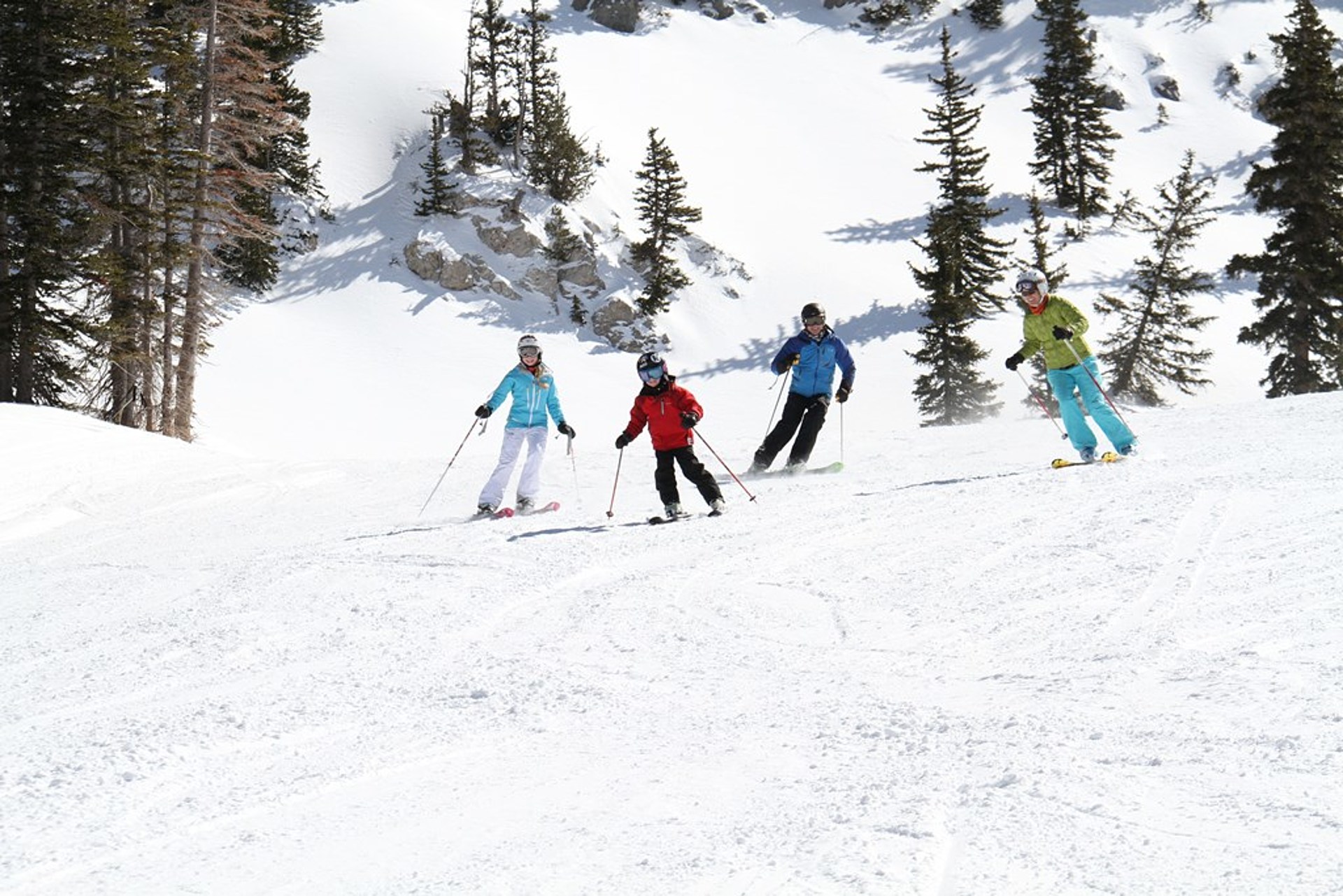Utah’s diverse landscapes, ranging from alpine meadows to desert canyons, offer a stunning array of wildflowers. Here are 10 of the most common and captivating wildflowers you can find in Utah from Salt Lake City across Northern Utah.
1. Heartleaf Arnica
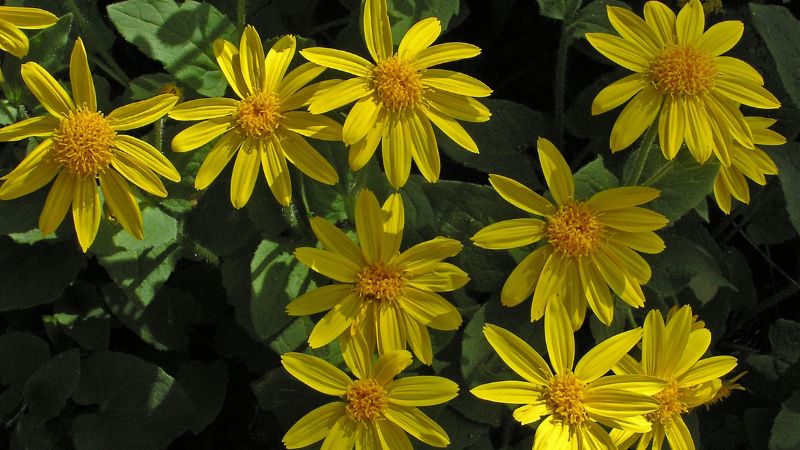
Heartleaf Arnica is a delicate wildflower that stands less than 12 inches tall. It’s characterized by its heart-shaped leaves and bright yellow flowers, which are approximately two inches in diameter. The leaves and stems are slightly hairy, and the plant’s overall appearance can often be mistaken for sunflowers (Helianthus) or balsamroots (Balsamorhiza).
- Habitat: Understory of spruces, fir, and aspen.
- Bloom Time: May through July.
- Interesting Facts or Uses: The heart-shaped leaves are edible and have medicinal properties useful for reducing infection and bruising.
2. Fireweed
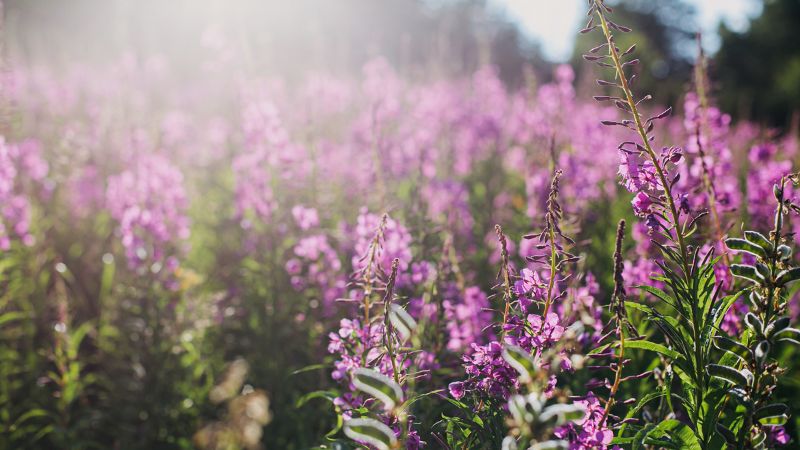
Fireweed is a tall, striking wildflower that can reach heights of 2-4 feet. It features long, delicate stems with vibrant pink to purple flowers that bloom in a sequence, starting from the lower part of the stem and culminating at the top. As the summer progresses, the petals drop, and long cylindrical pods develop, releasing seeds attached to silky strands of down.
- Habitat: Shrub, aspen, willow communities, sunny meadows.
- Bloom Time: Summer.
- Interesting Facts or Uses: The plant is often the first to flourish in areas that have been burned by fire.
3. White Bog Orchid
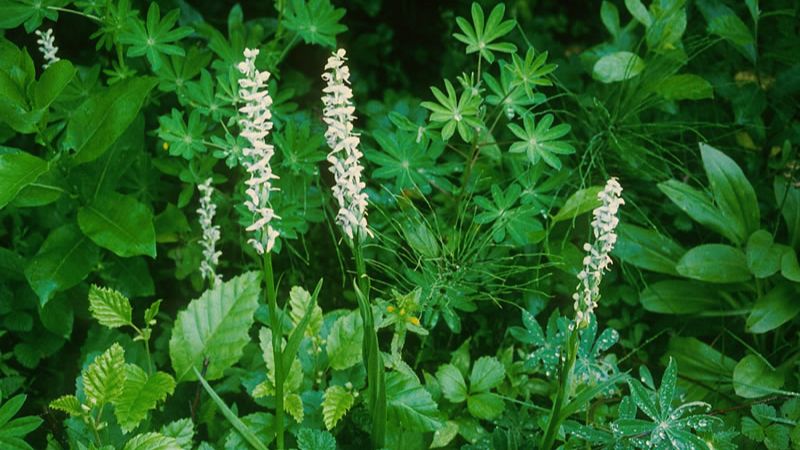
The White Bog Orchid is a delicate and elegant wildflower, typically less than one foot tall. It boasts beautiful white blossoms densely clustered close to the central stem, which can sometimes reach up to 12 inches or higher. The stems have bright green leaves that complement the white flowers.
- Habitat: Wet, boggy areas near springs, seeps, and streams.
- Bloom Time: June to early August.
- Interesting Facts or Uses: The flower emits a pleasant scent with hints of cloves, vanilla, and orange.
4. Sego Lily
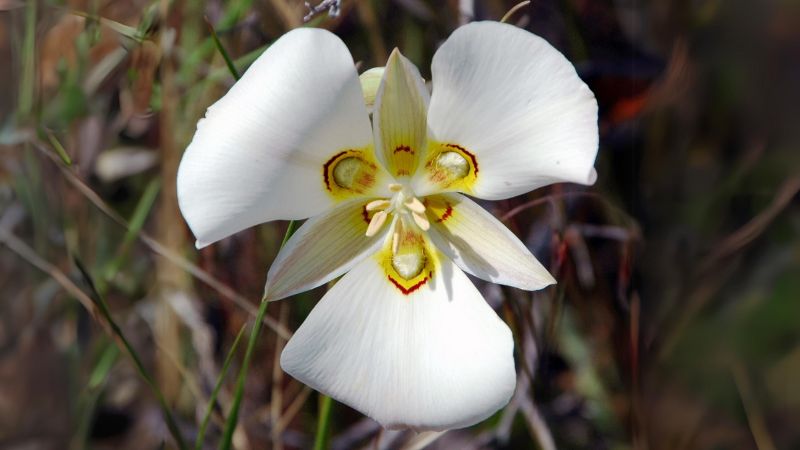
The Sego Lily is a stunning wildflower that serves as Utah’s state flower. It features three smooth, white petals with patches of yellow and maroon at the base. The flower resembles the shape and height of a spring tulip, growing up to 1.5 feet tall. Its starchy bulb has been historically significant for both Native Americans and early pioneers.
- Habitat: Sagebrush, aspen communities, rocky slopes.
- Bloom Time: June and early July.
- Interesting Facts or Uses: Utah’s state flower; its starchy bulb was a food source for pioneers.
5. Indian Paintbrush
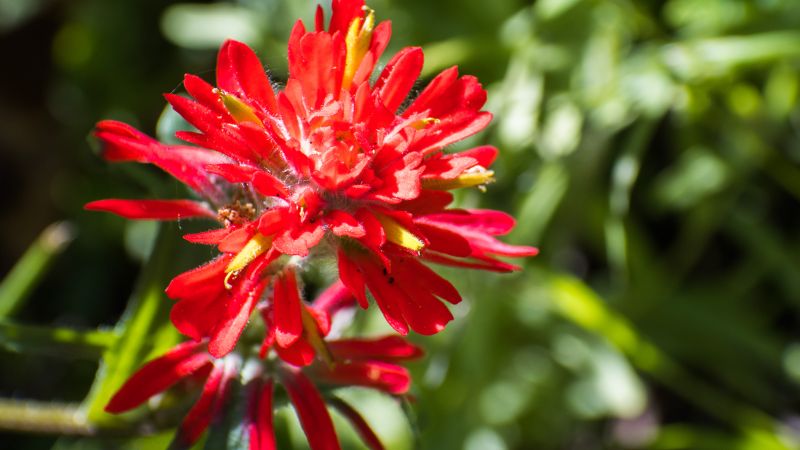
The Indian Paintbrush is a distinctive and colorful wildflower known for its vibrant bracts that come in shades of electric red, pink, and orange. The actual flowers are inconspicuous, but it’s the colorful bracts that catch the eye and attract pollinators. The plant can grow up to 2 feet tall and is easily recognizable in various habitats across Utah.
- Habitat: Sagebrush and aspen communities, rocky slopes, meadows.
- Bloom Time: June, July, and early August.
- Interesting Facts or Uses: They are semi-parasitic, stealing nutrients from neighboring plants.
6. Elephant’s Head
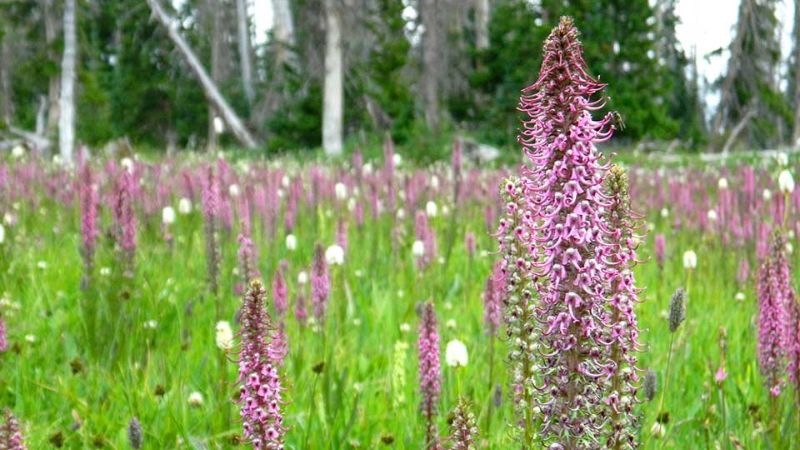
Elephant’s head is a unique and intriguing wildflower that gets its name from its distinctive magenta pink or purple flowers, which resemble an elephant’s face and trunk. The plant can grow up to 2 feet high and features fern-like leaves with toothed edges. Its flowers are clustered together on singular stems, and it is often found in wet and boggy areas.
- Habitat: Wet soils, bogs, seeps, springs.
- Bloom Time: Late June through early August.
- Interesting Facts or Uses: The petals of the Elephant’s head reflect visible light and ultraviolet light.
7. White Colorado Columbine
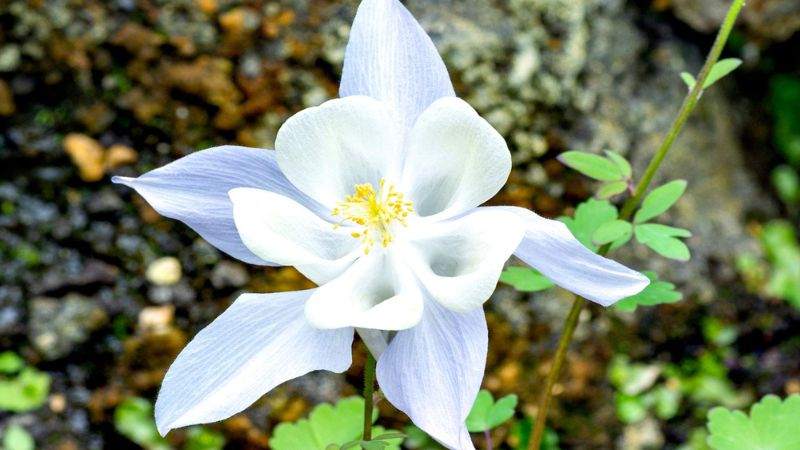
The White Colorado Columbine is a graceful and elegant wildflower with unique bell-shaped flowers. It features white petals and sepals, often with a contrasting yellow center. The flowers are suspended above delicate, fern-like foliage, creating a striking appearance that stands out in any garden or natural setting.
- Habitat: Understory of aspen and mountain shrub communities.
- Bloom Time: July and early August.
- Interesting Facts or Uses: Flowers can vary in color based on soil acidity.
8. Silvery Lupine
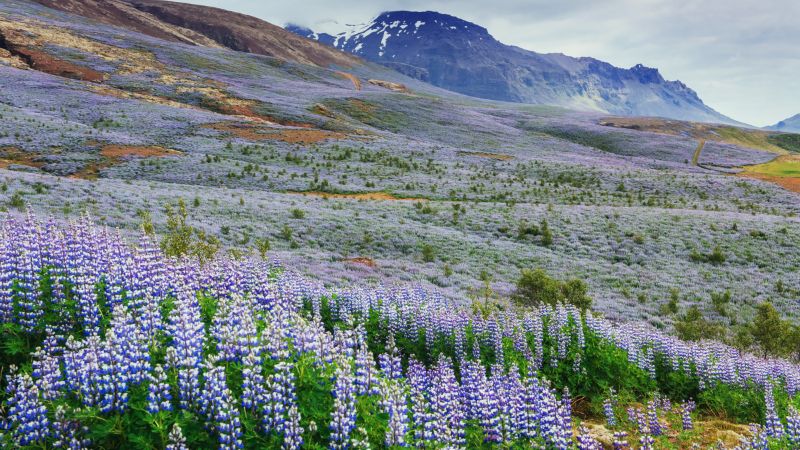
The Silvery Lupine is a beautiful and versatile wildflower known for its vibrant blue to purple flowers. It features palmate leaves with 5-9 narrow leaflets and grows in an upright form, reaching heights of 1-3 feet. The flowers are arranged in dense clusters at the top ⅓ of the stem, adding a splash of color to meadows and open spaces.
- Habitat: Mountain shrub and aspen communities.
- Bloom Time: Variable, depending on the elevation.
- Interesting Facts or Uses: Roots host nitrogen-fixing bacteria that enrich the soil.
9. Western Yarrow
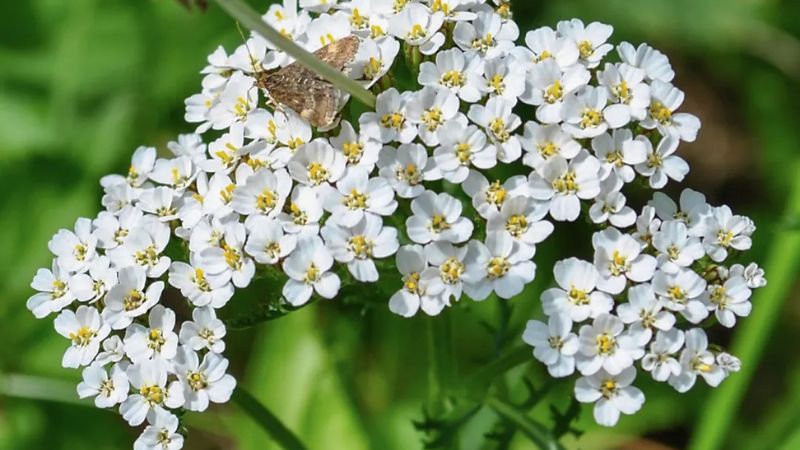
Western Yarrow is a hardy and adaptable wildflower known for its feathery leaves and clusters of small, white, or occasionally pink flowers. The plant typically grows from 3 to 18 inches tall and features long, alternating leaves with a lacy appearance. The flowers are densely packed into flat heads composed of numerous tiny blooms, creating a delicate and attractive display.
- Habitat: Common in most alpine ecosystems.
- Bloom Time: Summer.
- Interesting Facts or Uses: Named after Achilles, used to treat wounds.
10. Western Bluebell
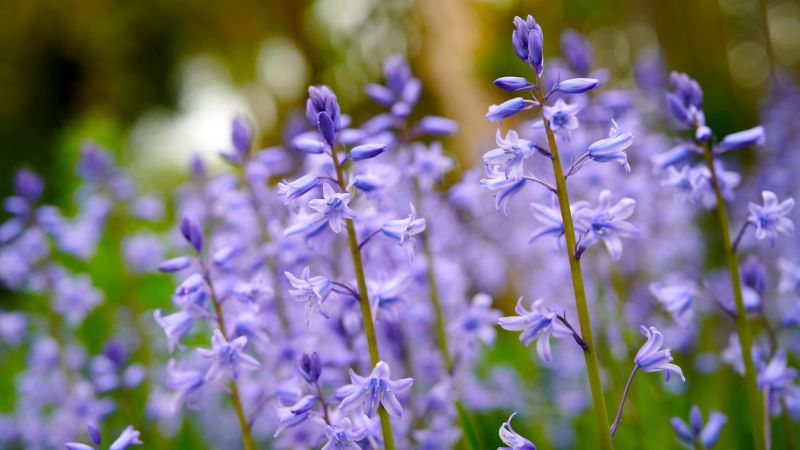
Western Bluebell is a charming wildflower known for its vibrant blue or purple trumpet-shaped flowers. The flowers are clustered together in dense groups, creating a beautiful display that stands out against the green foliage. The plant typically grows to less than 1 foot tall and has oval-shaped leaves that are often covered in fine hairs.
- Habitat: Sagebrush or pinyon and juniper communities.
- Bloom Time: Spring (snowmelt and runoff)
- Interesting Facts or Uses: Prefers moist soil but can adapt to dry areas.
Where to Find the Most Common Utah Wildflowers
Albion Basin
Albion Basin is a high-altitude meadow nestled alongside a glacially carved mountainside in the Wasatch-Cache National Forest. With over 120 species of plants, it’s a paradise for wildflower enthusiasts.
- Location: Little Cottonwood Canyon Road to Alta Ski Resort
- Wildflowers to Spot: Lupine, Indian paintbrush, columbine, sunflowers
- Peak Season: Mid-July to early August
Alpine Pond Trail, Cedar Break National Monument
The Alpine Pond Trail offers a 2.2-mile loop through meadows filled with a variety of wildflowers, set against a backdrop of stunning geological formations.
- Location: Cedar Break National Monument near Brian Head
- Wildflowers to Spot: Lupine, mountain bluebell, Indian paintbrush, yellow bush, penstemon
- Entrance Fee: $10 per person
Silver Lake Loop, Big Cottonwood Canyon
Silver Lake Loop is an accessible trail around the lake, perfect for spotting birds, wetlands, and the occasional moose.
- Location: Brighton Ski Resort’s parking lot
- Wildflowers to Spot: Various species around the lake
- Trail Length: Just under a mile
- Visitor Center: Pick up a wildflower guide at the Silver Lake Recreation Area visitor center.
Lava Tube Trail, Snow Canyon State Park
Explore Utah’s unique lava tubes while enjoying desert wildflowers along the Lava Tube Trail. This 2.3-mile trail offers a fascinating mix of geology and flora.
- Location: Snow Canyon State Park near St. George
- Wildflowers to Spot: Fiddleneck, elegant lupine, Palmer penstemon, firecracker penstemon, sego lily, yellow evening primrose, and more.
- Special Note: Bring a flashlight or headlamp for exploring lava-formed caves.
Mount Timpanogos Trail
This challenging 15-mile out-and-back trail offers hikers breathtaking views and a chance to see a variety of wildflowers, including some unique species.
- Location: Mount Timpanogos
- Wildflowers to Spot: Elephanthead, penstemon, columbine, aspen bluebells, yarrow, larkspur, Indian paintbrush, skyrockets, bistorts, Jacob’s ladder
- Trail Difficulty: Rated difficult; not suitable for casual nature walkers
- Highlights: Emerald Lake at 10,380 feet and summit at 11,749 feet
Tony Grove Nature Trail
Tony Grove Lake is known for its vibrant summer wildflowers and offers a moderately trafficked 1.2-mile loop trail that showcases the area’s natural beauty.
- Location: Tony Grove Lake, 19 miles east of Logan
- Wildflowers to Spot: Daisies, lupines, columbines, Indian paintbrushes, monkshood, mountain sunflowers
- Trail Difficulty: Suitable for all skill levels
Find the Best Place to Stay During Wildflower Season
After exploring the breathtaking wildflowers of Utah, you’ll want a cozy and comfortable place to unwind and soak in the beauty of nature. Whether you’re planning a romantic getaway or a family adventure, Alta Chalets offers a range of beautiful cabins and chalets that provide the perfect base for your wildflower exploration.
Don’t miss out on the opportunity to experience Utah’s stunning wildflowers up close and personal. Book your stay with Alta Chalets today and make your wildflower adventure unforgettable!







